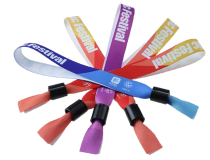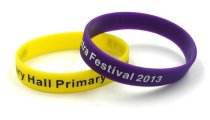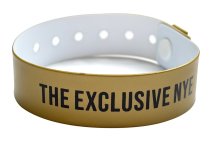Hospital Wristbands – Wristbands for Hotels
Vinyl and Paper Wristbands for long term use at Hospitals
Description:
Hospital wristbands are a crucial part of healthcare, providing vital information to medical professionals about patients. These wristbands have become a ubiquitous feature in hospitals and healthcare facilities around the world, but their importance and usefulness are often underestimated. In this page, we will explore the history of hospital wristbands, the types of information they contain, and their benefits for patients and healthcare professionals. History of Hospital WristbandsThe use of hospital wristbands dates back to the 1950s when they were first introduced as a means of identifying newborns in hospitals. These wristbands were made of paper and contained basic information such as the baby’s name, date of birth, and the mother’s name. Over the years, hospital wristbands have evolved to become more durable and include more detailed information. Today, hospital wristbands are typically made of vinyl or plastic and are designed to withstand the rigors of hospital environments. Types of Information Contained in Hospital WristbandsHospital wristbands contain a variety of information about patients, including:
Benefits of Hospital WristbandsHospital wristbands provide a number of benefits for patients and healthcare professionals, including:
ConclusionHospital wristbands are a critical part of healthcare, providing vital information about patients to medical professionals. They have evolved over the years to become more durable and include more detailed information, making them an essential tool for healthcare professionals. While hospital wristbands may seem like a small detail in the grand scheme of healthcare, their importance cannot be overstated. They play a crucial role in patient safety, communication, and record-keeping, helping ensure that patients receive the best possible care. For more information about how this product can be used at your healthcare facility please contact our sales team either on info@wristbandseurope.com or else on +35699990566. They will be happy to help with any queries you may have about the different types of material and how they are best suited to a particular need. Hospital Wristbands SummaryWristbands with write-on labels are a convenient and affordable way to identify individuals in a variety of settings. Whether for use in schools, hospitals, events, or workplaces, these wristbands are versatile and easy to use. In this blog post, we will explore the benefits of wristbands with write-on labels and the different types available on the market. What are Wristbands with Write-On Labels?Wristbands with write-on labels are essentially wristbands with a space to write important information. These wristbands can be made of a variety of materials, including Tyvek, vinyl, and silicone. The labels on the wristbands can be pre-printed with a specific message, or they can be left blank for users to write on.   Benefits of Wristbands with Write-On Labels
Contact us today via our live chat feature and speak to us about how wristbands that you can write on can work for your organisation.  Vinyl Wristbands for Hospitals
Score: 5/5
Summary: Hospitals use Wristbands regularly and the majority use Vinyl Wristbands on a daily basis. This is because they cannot be removed once worn and can last for weeks or even months. They are relatively easy to clean and have the added bonus of the write on function. This is vital for many healthcare facilities as they can include patient data that is easily visible. The best choice for Hospital wristbands.
Pros
Cons
.png) Tyvek Wristbands for Hospitals
Score: 4/5
Summary: Tyvek Wristbands are often used at Hospitals but can only be given to patients or guests for short durations. As the wristbands will wear off after 48 hours. They are a very economical way of identifying different persons and they can be written on using a permanent marker similar to the write on vinyl bands. Most of the time the product is felt slightly inferior to the plastic bands but they can certainly offer a viable alternative for short durations.
Pros
Cons
 Fabric Wristbands for Hospitals
Score: 3/5
Summary: Most Hospitals use Vinyl wristbands mostly for patients – and sometimes they can use tyvek wristbands for those who will only wear it for 24-48 hours. Fabric bands can sometimes become dirty quite easily and this is not ideal for hospitals who require cleanliness at all times. Additionally Fabric wristbands do not have the write on label option which is very popular at hospital settings. While Fabric is certainly durable and long lasting enough it is not the ideal product for the healthcare setting.
Pros
Cons
Silicone Wristbands for Hospitals
Score: 2/5
Summary: Silicone Wristbands are rarely used at hospitals as they do not offer many attributes that are required. They can be easily removed and given to someone else meaning they cannot be trusted to identify patients or any conditions. If hospitals want to have a product that is not removable then this is not it. Apart from that, they are more commonly used by charities to raise awareness or funds. They are available in a range of colours and can be ordered in adult, teen or children sizes.
Pros
Cons
|















